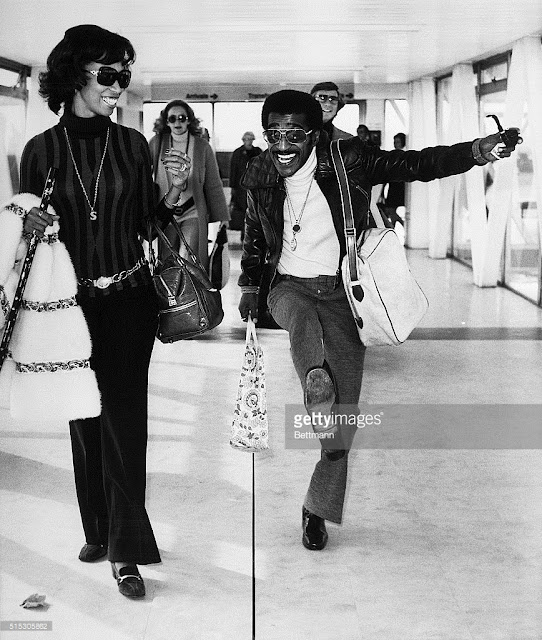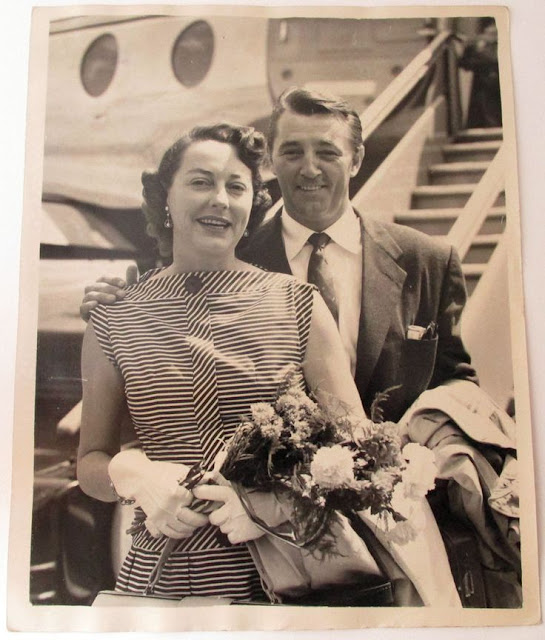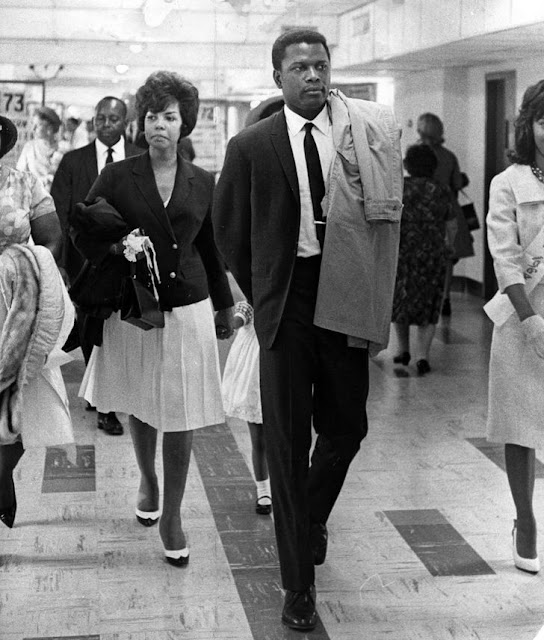 |
| Victoria Negri and Robert Vaughn on the set of Gold Star (2016) - Photo by Ben Jarosch |
I'm pleased to present you with a guest post from filmmaker Victoria Negri who wrote, directed, produced and starred in the new independent movie Gold Star (2016). Based on a true story, Gold Star follows Vicki as she deals with the complications that arise from her 90 year old father's recent stroke. Her father is played by Robert Vaughn and this is his final film. I had the privilege of watching this film recently and I marveled at the fine storytelling, Vaughn's amazing performance and how much the story reminded me of my own father's illness. I'll have a full review of the film on the blog soon. In the meantime enjoy this guest post.
 |
| Robert Vaughn in Gold Star (2016) |
"Today, Robert Vaughn would have been 84 years old. I initially wrote this blog post about working with Robert the night before his passing, and have since edited it. Everything about working with him is surreal now that he’s gone. Trying to sum up what working with him means to me personally and my career overall is challenging.
My debut feature film, Gold Star, which I also star in and produced, is loosely inspired by my experiences caring for my father during his last year alive, after he suffered a stroke that left him speechless and mostly paralyzed. It’s an unconventional father/daughter story, one that I hope honestly portrays ideas surrounding the ways we process the inevitability of aging and death.
I initially set about to cast an unknown actor in the role of my dad. I admired films with non-actors, and wanted someone who felt “real,” perhaps someone who had recovered from a stroke in real life and could realistically portray it in a movie. After meeting with several non-actors, I abandoned the idea, fearing hiring someone almost 90 years old without experience would prove to be too difficult. I hired casting director Judy Bowman in New York to help me in my quest to cast the role of Carmine, my father in the film. Robert Vaughn, Oscar nominee, Emmy winner and veteran of more than sixty years in the business, was at the top of our list.
It was a fairly straightforward process. We reached out to him, sent him the script, made an offer through his manager, and he accepted.
I met Robert a month-and-a-half before we began production. I drove to his house in Connecticut, through wooded back roads, up steep hills, past beautiful homes. His residence was at the end of a long street. As I walked up the front path, I did a few relaxation breathing techniques I learned in yoga and Tai Chi classes, trying to prepare myself, and was quickly interrupted by a booming, old school Hollywood kind of voice, “Why hello, Victoria.” I was startled. Robert was on his front steps already waiting for me. I nervously handed him a box of cookies from my favorite bakery that I bought for him and his wife, and followed him inside.
I sat across from him in his beautiful living room, his Emmy Award shining not far from me on his mantel. Surrounding us were photos he took with The Beatles, his frequent co-star Steve McQueen and others, a beautiful wooden desk and a large, black grand piano once performed on by Judy Garland.
We chatted about his career and his interest in the script. I bluntly asked him why he said yes. What about the film stood out, I wondered. Surely he gets many offers.
 |
| Robert Vaughn in Gold Star (2016) |
His answer surprised me. He said he’d never had the challenge of playing someone recovering from a stroke and facing such a severe physical handicap (with no lines of dialogue on top of it), and that he wanted to see if he could do it. We spoke a lot about his love for Hamlet and Shakespeare and his first acting role when he was very young in Three Billy Goats Gruff. I asked him what kind of acting techniques he preferred. He told me over the years, he took what worked for him and developed it into his own sort of technique that could not be pinned down to any specific method.
Robert was genuinely curious about my process of writing, why certain things were in the script. He asked fantastic questions about certain scenes, and listened carefully. I told him a lot about my father and specifics on how the stroke affected him. The fundamental question he wanted to know to help him play the character was, “What kind of a man was your father? What was his a mantra he had or thing he lived by?” And I remember my reply was, “Mind over matter.”
He noticed me staring at the photos and gave me a tour of them. I’ll never forget him proudly pointing at a photo of The Beatles, saying, “They asked to meet me.” Before I left, he handed me his autobiography, signed it and told me to read it. I was home this past weekend in Connecticut for his funeral and a screening of the film (both on the same day, which was extremely emotional), and I looked at the inside of the book. Robert signed the book, “Victoria, best of luck on your great adventure.” Making and releasing this film has been a five-year adventure so far, and thanks to Robert, it has been great.
 |
| Robert Vaughn and Catherine Curtin in Gold Star (2016) |
On the train ride back to New York City after our initial meeting, I poured through his autobiography, quickly becoming more and more intimidated and in awe of the man I’d be working with. He had a doctorate, writing his thesis on the blacklist. He was good friends with the Kennedy family, he was well-read and passionate about Shakespeare, not to mention a fantastic writer of his own. He had hilarious anecdotes about working with Yul Brynner and Steve McQueen, and talked a bit about his relationship with Natalie Wood. If you haven’t read his book “A Fortunate Life,” make it a priority.
Working with Robert on set was one of the greatest experiences I’ve had. He was selfless. He put his faith entirely in me, which built my confidence up. Whatever I said, he trusted. He told some crew members, “Who knows her story better than her?” There were times I’d let the camera roll in close-up on him, and we would improv back and forth. Because he has no lines in the film, I’d tell him what he should physically get across, see what he did with his face and body, and let it play out. In one particular scene, he joked with me afterwards saying, “You’ve got enough for one film from that entire take.”
My film was by no means a multi-million dollar production. We shot most of Robert’s scenes in my childhood home, and spent two days on location at Gaylord Rehab Facility in Wallingford, Connecticut. Robert spoke with my sister, who was on set a few days, in between takes, asking her questions about my family, further probing into his character. I believe he was always watching, taking notes. I saw him looking at photos and studying paintings my father made. He was an intelligent actor with a true old-school work ethic. He showed up on time, trusted his director completely, played within the world I set up for him, and filled each take with a full, multi-layered character.
 |
| Robert Vaughn and Catherine Curtin in Gold Star (2016) |
I am lucky to have worked with him. In completely trusting me on set, despite the fact that I was a complete unknown, he empowered me with confidence. His trust was the best kind of mentorship a first time writer-director like me could have asked for.
Last week, we screened Gold Star at Gaylord for National Caregivers Month. The emotions I felt watching Robert’s performance on screen for the first time since his passing were complicated. I’m proud and honored to have his last performance on film be in my movie. Watching the film now, it adds another new layer of meaning. The film was initially meant to process what it was like losing my father, but now, as I watch it, I’m processing losing Robert as well.
I am more determined now than ever for Gold Star to get out into the world, so that Robert’s last performance can be seen by as wide of an audience as possible, to honor his remarkable legacy as a true movie star."
Stay tuned about future festival screenings and follow us for news
Official Site:
goldstar-film.com
Facebook:
Facebook.com/GoldStarFilm
Twitter:
@GoldStarFilm
- Victoria Negri
 |
| The cast and crew of Gold Star (2016) photo by Ben Jarsoch |






































































